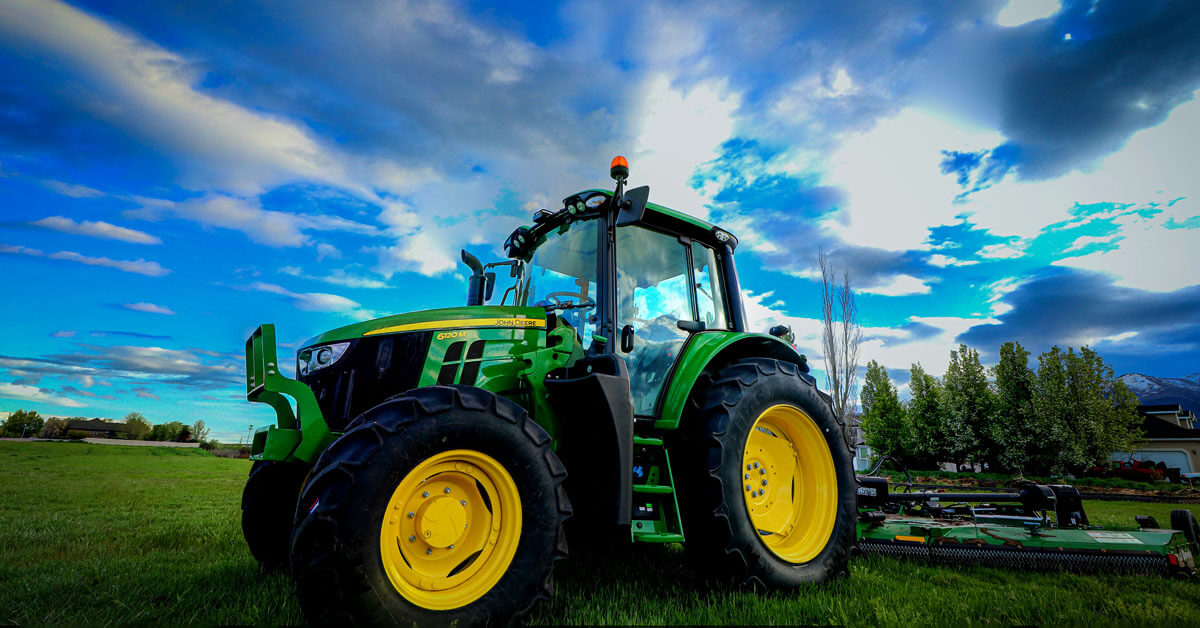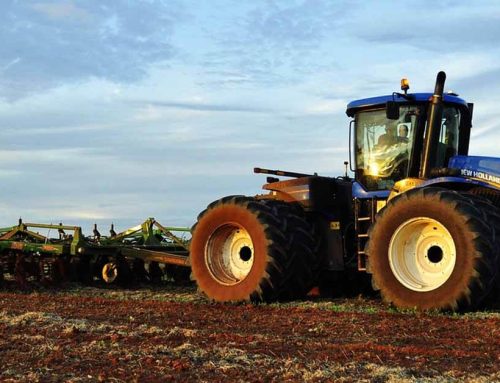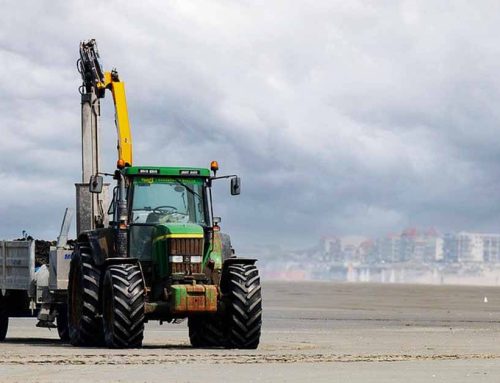The John Deere 5100E is a versatile and reliable utility tractor designed for a wide range of agricultural and landscaping tasks.
It is well-regarded for its solid performance, ease of maintenance, and operator comfort.
Here is a detailed review covering specifications, technical details, usage, maintenance, and customer service aspects:
John Deere 5100E Specifications and Technical Details
Engine:
The John Deere 5100E is powered by a John Deere PowerTech™ 4045 PWL 4-cylinder diesel engine with a displacement of 4.5 liters (276 cu in).
It is turbocharged and aftercooled, compliant with Final Tier 4 emissions standards, and features DOC/SCR after-treatment.
Rated engine power is about 100 hp (74.6 kW) at 2400 rpm, with a maximum of 102 hp (76 kW).
Peak torque is 384 Nm (283 lb-ft) at 1700 rpm.
Transmission:
It comes standard with a PowrReverser™ transmission offering 12 forward and 12 reverse speeds, with an optional Hi-Lo version providing 24 forward and 12 reverse gears.
The transmission features a wet clutch and electro-hydraulic reverser for smooth directional changes.
Hydraulics:
The John Deere 5100E tractor has an open-center hydraulic system with a rated pump output of 85.1 L/min (22.5 gpm).
It includes two rear selective control valves (SCVs), with options for a third and joystick control.
The John Deere 5100E rear hitch is Category 2 with a maximum lift capacity of 1457 kg (3213 lb).
PTO:
The rear PTO is independent and electro-hydraulic, with standard 540/540E speeds and an optional 1000 RPM PTO.
Rated PTO power is 85 hp (63.4 kW) at 2400 rpm, with a maximum of 88 hp (65.5 kW) at 2200 rpm.
Dimensions and Weight:
The wheelbase measures 92.5 inches (234 cm), overall length is 159.1 inches (404 cm), and width is about 85.1 inches (216 cm).
Shipping weight ranges from approximately 7,275 lbs (3,299 kg) for the open station to 8,150 lbs (3,696 kg) for the cab version.
Maximum permissible weight is 11,508 lbs (5,220 kg).
Operator Station:
Available with either an open operator station or a comfortable enclosed cab.
The cab features air-ride seat options, automotive-style LED instrument cluster, and noise levels around 78 dBA.
Visibility and controls are designed for ease of use, with clear indicators and onboard diagnostics.
Cooling and Serviceability:
The John Deere 5100E tractor features an advanced cooling package with a first-pass screen, slide-out condenser (cab models), tilting charge air cooler, and hydraulic oil cooler for easy maintenance access.
The electronically controlled fan drive optimizes fuel efficiency and reduces noise.
Usage
The John Deere 5100E is suitable for a variety of tasks including:
Tillage and planting
Loader work
Hay and forage operations
Mowing and landscaping
Light to medium-duty hauling and transport
Its 100 hp class makes it powerful enough for demanding utility work while maintaining maneuverability with a tight turning radius (~3.54 m with brakes).
Maintenance
John Deere has designed the 5100E for ease of maintenance with:
Accessible cooling system components to reduce downtime
Wet sleeved cylinder liners for engine durability
Standard 12V electrical system with 90-120 amp alternator options
Routine service points grouped for quick checks and fluid changes
Regular maintenance such as oil and filter changes, hydraulic fluid checks, and PTO inspections are straightforward, supported by John Deere’s extensive dealer network.
Customer Service and Support
John Deere offers robust customer service and support for John Deere 5100E, including:
Nationwide dealer network providing parts, service, and warranty support
Optional maintenance plans and financing options available through dealers
Access to detailed product brochures and operator manuals
Strong resale value and availability of used units through platforms like MachineFinder and TractorHouse.
What are common issues reported by users of the 5100E and their solutions
Common issues reported by John Deere 5100E users and their solutions include:
1. Engine Stalling
Causes can be inadequate fuel delivery, clogged air filters, worn ignition components, faulty fuel pumps, or engine overheating.
Solutions involve inspecting and cleaning fuel lines, replacing fuel filters, ensuring the correct fuel grade, checking and replacing spark plugs or ignition coils, cleaning or replacing air filters, and verifying the cooling system is functioning properly to prevent overheating.
2. Rough Transmission Shifting
Often due to lack of regular maintenance, low or contaminated transmission fluid, or worn clutch components.
Regular servicing, checking and topping fluid levels, replacing worn parts, and adjusting the clutch or governor linkage can resolve this.
3. Steering Wheel Rotates Without Resistance
This may result from worn or faulty parts inside the steering column, low hydraulic oil levels, faulty connections, or malfunctioning steering hydraulic cylinders.
Solutions include checking and replenishing hydraulic oil, inspecting and replacing damaged steering components, and repairing or replacing the hydraulic cylinder if leaking is detected.
4. Hydraulic Oil Leaks
Usually caused by worn gaskets or seals.
Repair involves identifying the leak source and replacing the defective seals or gaskets to restore proper hydraulic function.
5. Diesel Engine Won’t Start
Causes include faulty fuel pumps or filters, clogged air filters, corroded electrical components, or low/dirty engine oil.
Solutions are to replace fuel filters, clean or replace air filters, inspect and repair electrical wiring, check and maintain proper oil levels, and inspect hoses and belts for wear.
6. Fuel Injector Issues Causing Power Loss or Surging at High RPM
Some users report surging or power loss at higher RPMs possibly due to fuel injectors pulling in air.
Diagnosis can be challenging and may require injector inspection or replacement, which can be costly.
Professional service is recommended for this problem.
7. Overheating
Overheating can be caused by low coolant levels, radiator blockages, or worn hoses and gaskets.
Regularly check coolant levels, clean radiator fins, replace damaged hoses or gaskets, and maintain proper engine oil levels to prevent overheating.
Summary
The John Deere 5100E is a well-rounded utility tractor with a powerful, efficient engine, versatile transmission options, and user-friendly hydraulics and PTO systems.
Its design emphasizes operator comfort and ease of maintenance, making it suitable for both professional farmers and contractors.
The strong dealer support and availability of parts ensure long-term reliability and uptime.
For those seeking a used 100 hp utility tractor, the John Deere 5100E is a compelling choice balancing power, versatility, and serviceability.
If you are considering purchasing a used John Deere 5100E, it is advisable to inspect the tractor’s service history, check for wear on key components like the transmission and hydraulics, and verify the condition of the engine and PTO system to ensure it meets your operational needs.






Leave A Comment